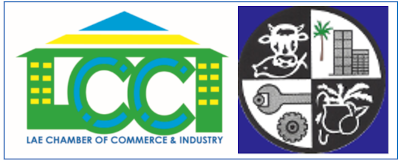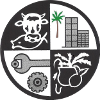A WORLD Bank Group report released today says that eight out of 10 businesses in Papua New Guinea suffer substantial losses and security costs as a result of high rates of crime and violence, slowing business expansion and hampering the country’s economic development.
More than 80% of 135 companies surveyed said their business decisions are negatively influenced by the country’s law and order issues, with crime increasing the cost of doing business.
The expense of avoiding criminal damage limits firms’ ability to grow, deters start-ups, and imposes long-term social costs on the country, the report states.
“Crime in Papua New Guinea constrains businesses and threatens to put the brakes on the economy,” said Carolyn Blacklock, resident representative in Papua New Guinea for the International Finance Corporation. The IFC is a member of the World Bank Group which focuses on private sector development in emerging markets.
“Local firms not only struggle to be competitive as they seek to manage crime, but they also pass on these costs to consumers through higher prices, less choice, and the absence of new products and services.
“This is bad not just for business, but the economy as a whole.”
Titled “The cost of crime and violence to businesses”, the World Bank report draws on a survey and interviews conducted with local businesses and is the first in PNG to assess the impact of crime and violence on local enterprise.
It found that security, in particular, represented a growing expense for businesses with 84% of the country’s firms paying for security hardware such as installing specialised gates and security alarms.
Hiring private security also consumes on average 5% of firms’ annual operating costs.
Companies are also suffering direct losses averaging K89,000 ($A33,000) per year from stolen property and about K71,000 ($26,000) annually to petty theft by employees.
A further 38.5% of companies reported closing their businesses early each day to avoid becoming victims of crime, resulting in losses of income estimated at an average of K93,000 ($34,000) per year.
World Bank social development specialist and co-author of the report Alys Willman said: “Everybody in PNG is losing money and time to crime.
“While the report assesses direct losses from crime and violence, we can never calculate the investment foregone, the expansions to new products and areas that never happened, the number of businesses that never opened their doors, or the jobs that were never created because the costs of security were too high,” she said.
“These costs are all passed on to consumers – and everybody suffers.”
Businesses are also worried about broader social costs, the report found.
High levels of crime and violence create fear, which constrains the movements of staff and customers and stigmatises the young, who are often seen to be perpetrators of violence and crime.
Domestic violence, in particular, intrudes into the workplace, contributing to absenteeism and affecting morale and productivity of staff.
Official police data and data from government-led victimisation surveys, suggests that crime has stabilised in the country over the last decade, though there are disparities across regions.
There is evidence however that violent crime may be increasing as a proportion of overall crime, especially in recognised ‘hotspots’ such as the Western Highlands, Madang, Lae and the National Capital District.
In Lae, incidence of violent crime more than doubled in 2010 compared with 2008.
The World Bank report is part of its wider research and dialogue series on the socioeconomic costs and drivers of crime and violence in Papua New Guinea.
Carried out at the request of the PNG government, the report draws on an extensive review of existing data, a survey of 135 businesses conducted by the PNG Institute of National Affairs, in-depth interviews with business owners, and consultations with businesses and employees carried out from 2012 to 2014.
The full report is available by clicking here.

